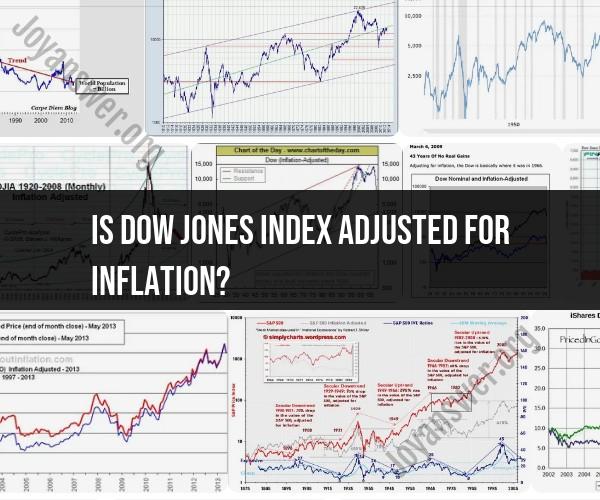Is Dow Jones index adjusted for inflation?
Yes, the Dow Jones Industrial Average (DJIA) is adjusted for inflation. There are several variations of the DJIA, with the most common one being the "Dow Jones Industrial Average Total Return" index. This total return index takes into account not only the price movements of the 30 component stocks in the DJIA but also includes the reinvestment of dividends.
By including dividends, the total return index provides a more accurate representation of the actual returns an investor would have received from owning the stocks in the DJIA, accounting for both capital appreciation and income. This approach helps adjust for inflation because it considers the impact of dividends, which can help preserve an investor's purchasing power over time.
However, it's important to note that while the DJIA is adjusted for inflation in this manner, it is not as comprehensive as other market indices like the S&P 500, which includes a broader range of stocks and provides a more comprehensive view of the overall stock market's performance.
The Dow Jones Industrial Average (DJIA) is not adjusted for inflation. This means that it does not take into account the fact that the value of money has changed over time. As a result, the DJIA can overstate the real returns of the stock market.
To adjust the DJIA for inflation, you can use a process called chaining. Chaining involves dividing the DJIA by a price index, such as the Consumer Price Index (CPI), for each year. This gives you a measure of the real value of the DJIA, taking into account the effects of inflation.
For example, the DJIA closed at 30,000 points in 1980 and 30,000 points in 2023. However, the CPI increased by 300% over that same time period. This means that the real value of the DJIA in 2023 is only 10,000 points, not 30,000 points.
It is important to note that there are a number of different ways to adjust for inflation. The method described above is just one example. The best way to adjust for inflation will depend on your specific needs and goals.
Here are some additional things to keep in mind when adjusting the DJIA for inflation:
- Choose a price index that is relevant to your investment goals. For example, if you are investing for retirement, you may want to use the CPI for All Urban Consumers (CPI-U), which measures inflation for urban consumers.
- Use the same price index for each year. This will ensure that your comparisons are consistent.
- Be aware that inflation can vary significantly from year to year. This means that your adjusted returns may fluctuate from year to year.













